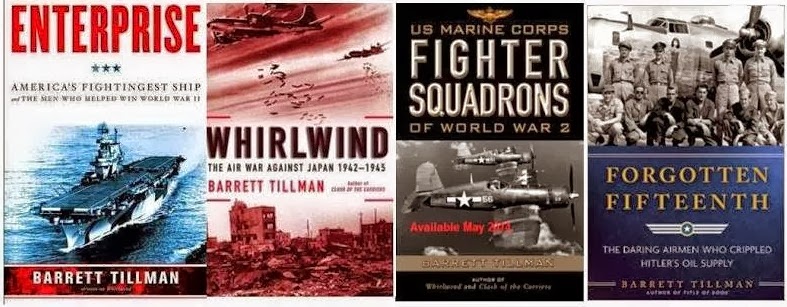SOMEWHERE BETWEEN 12-7 AND 9-11
This month marks the 68th anniversary of the Japanese attack on Hawaii (12-7-41) and America’s official entry into WW II. (The U.S. was conducting covert, illegal operations in the North Atlantic and Asia but that’s beside the point for now.) There’s nothing noteworthy about the number 68, but since we’re losing about 2,000 WW II veterans a day, perhaps it’s time for some comparisons.
The Pearl Harbor attack killed 2,402 Americans including 57 civilians. The 9-11-01 attacks claimed 2,973 victims (nearly all civilians), plus 19 perpetrators. Other than the fact that both events were surprise aerial attacks upon U.S. territory, there appears little in common. Perhaps the most cogent assessment is that whereas the Japanese had their own airplanes (350-some carrier aircraft), al Qaeda had none and therefore appropriated ours.
If there’s a major similarity, both incidents involved significant failures of intelligence. And what was known was not well disseminated to the operators who needed it. There is almost zero reason to doubt that it could happen again.
I’ve asked a comparison from people who were alive during both events, and the results are surprising. Two friends who flew against the Japanese said they know where they were on December 7, but they do not recall their reactions. They’re atypical; most people know exactly what they were doing when they heard and what they felt, though not everybody believed it. (Aboard the carrier Enterprise that morning, a chief petty officer waved a $100 bill—serious money back then—seeking anyone who thought the reports were true. There were no takers.)
You’ll get conflicting opinions as to which attack caused greater surprise, but the majority seems to side with 9-11.
On its face, 9-11 should not have surprised anyone as much as Pearl. The years before 1941 involved rising tension as the Roosevelt administration sought to influence (or to extort via embargos, depending upon one’s perspective) Tokyo’s aggressive behavior in China. However, there had been no overt Japanese actions against America other than the accidental bombing of a gunboat in China in 1937, so there was little reason for John Q. Public to anticipate what happened in Hawaii.
Contrarily, there was a long-long record of conflict with Muslim factions dating to the Republic’s dawning. (The Barbary pirates and all that.) More recent clashes with Iran, Iraq, and other Islamic entities provided ample reason for concern. Hijacking airliners was so common that passengers were warned not to resist: do what you’re told and (probably) everything will work out.
So: if there was a two-century record of conflict with Islam, why did 9-11 cause greater surprise? Probably because of the audacity involved: hijack not one but four U.S. airliners and fly three of them into targets in New York City and Washington, D.C. rather than a territory 2,300 miles offshore. (In late 1941 few Americans had ever heard of Pearl Harbor.)
Additionally, nearly every living American actually saw 9-11 unfold. I may have been among the last to know because that morning Dad and I were putting the ranch fire truck to bed for the winter. But those who missed the initial reports saw the World Trade Center impacts again and again and again and…well, you remember. Pearl Harbor was experienced via radio and newspapers, and only later via newsreels.
However, if you switch the question and ask which event provoked greater anger, my nonscientific survey shows Pearl, hands down. It’s hard to describe the visceral rage that the sneak attack on Oahu prompted in The Greatest Generation, even allowing for the fact that the “sneaky” part was unintended (Japanese diplomats couldn’t decode the war order from Tokyo for timely delivery in Washington.) The fact that the attack came amid “peace negotiations” only turned up the gas under that white-hot flame. Admiral Yamamoto almost certainly never said anything about awakening a sleeping giant, but the sentiment surely pertained.
The post-attack responses also offer vivid contrasts. Franklin Roosevelt and California Attorney General Earl Warren—icons of liberal Democrats—tossed 120,00 people of Japanese descent into detention camps, about 2/3 being U.S. citizens. They stayed behind wire for the duration. The “exclusion zone” included most western states, but in Hawaii, with 150,000 people of Japanese ancestry, fewer than 2,000 were detained. Go figure.
If you fast-forward to the Tehran hostage crisis of 1979-80, past 9-11 to today, there’s very little similarity. That’s because the virulent virus of political correctness has had five decades to take hold. While American diplomatic and military personnel were held by Iranian zealots for 15 months, U.S. celebrities were shouting “Re-straint! Re-straint!” (I remember TV thespian Howard Hesseman, among others.) But it isn’t just Hollywood libs. After the Fort Hood massacre (see my previous post) the Army chief of staff said his main concern was avoiding backlash against Muslims rather than allowing soldiers to defend themselves.
The foregoing is not to ignore people on the opposite fringe. In my city of Mesa, Arizona, an imbecile took “revenge” for 9-11 by murdering the first person he saw wearing a turban. The victim was a Sikh, not a Muslim. When police cornered the murderer he emerged with hands up, declaring, “Don’t shoot—I’m an American patriot!” That patriot is doing life without parole.
Meanwhile, in a severe reversal of the WW II sentiment, the U.S. Government has gone so far hard-a-port that it prohibits measures against possible Muslim terrorists lest it result in racial profiling. Never mind that Christians, Jews, Hindus, Buddhists, and most other faiths (including atheists) do not send their followers on suicide bombing missions.
Does the foregoing mean that we should suspect every Muslim, as some Americans did so many Asians after 12-7? No, of course not. After all, we need Muslims to help conduct the war on terror, which already has lasted twice as long as WW II, with no end in sight.
Somewhere there’s a middle ground between unjustly imprisoning people who resemble the attackers—and prohibiting logical precautions toward likely individuals on the other.
But Somewhere exists other than in the United States of America.
Such is the lesson of 12-7 and 9-11.
Saturday, December 19, 2009
Subscribe to:
Posts (Atom)



